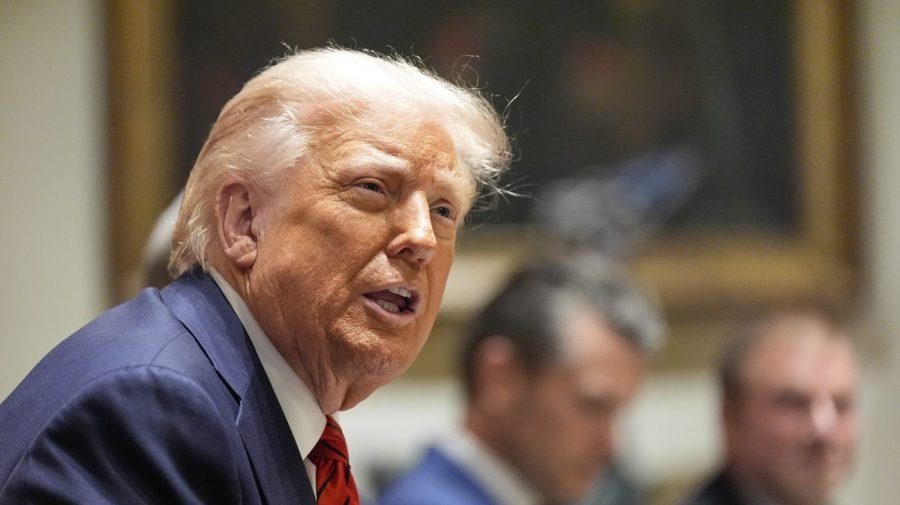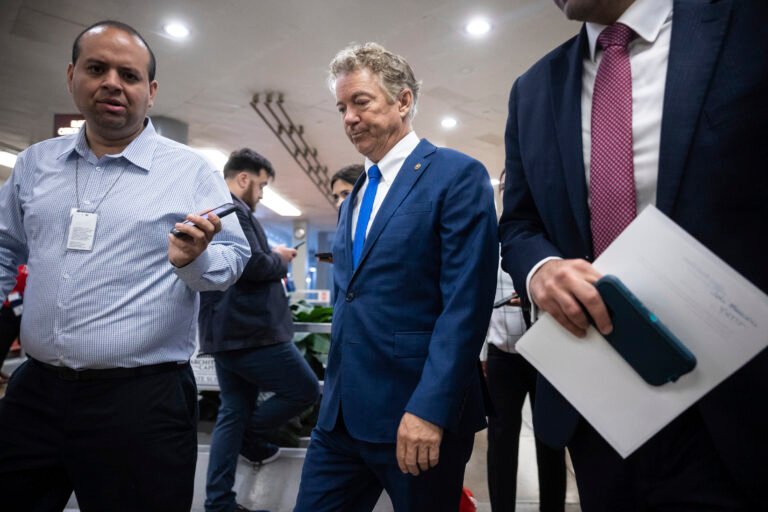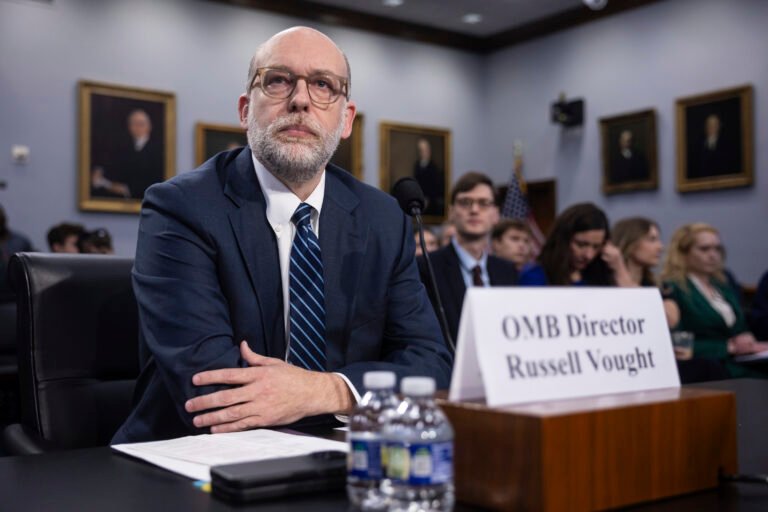
President Trump and his officials have touted his sweeping tariff actions as tools to not only ensure fairer trade internationally, but also pay down the federal government’s $36 trillion-plus debt.
As Trump faces pressure from both sides of the aisle over his trade plan, he and officials have partly defended his tariff actions as a key revenue-raiser that can help tackle the nation’s debt and reduce taxes.
But experts say they wouldn’t bet on Trump’s tariff actions as an answer to the nation’s debt problems, and point to conflicting goals from the administration on trade.
“You see a lot of different explanations for the purpose of the tariffs, and one of the central problems is that those different explanations are in conflict with each other, if not, flatly contradictory,” Ben Page, a senior fellow at the Urban-Brookings Tax Policy Center, said in an interview.
While Page and other experts agree that tariffs can help raise revenue, he also pointed to hopes from some Republicans that Trump’s tariffs plans could lead to fairer trade deals and more manufacturing jobs.
“If you do those negotiations, then clearly you’re not going to raise the revenue, because the tariffs will finally go away as part of the negotiations,” Page argued. He also said the goal of raising revenue “is a little bit in tension” with efforts to help boost manufacturing, noting “in order to raise revenue, you still have to have a bunch of imports coming in.”
“I don’t think there’s any question that tariffs can raise revenue. It’s a question of how much they can raise, and at what cost,” he said.
Banks like Goldman Sachs and J.P. Morgan raised their odds of a recession in recent weeks amid blowback in financial markets abroad and back at home over Trump’s tariffs imposing hundreds of billions of dollars in new taxes on foreign goods.
Trump defended the tariffs at the time as a strategy to prevent other nations from taking advantage of the country, as administration officials have described the trade deficit, or the gap between what the U.S. imports from or exports to other countries, as an “emergency.”
“President Trump imposed tariffs to address this emergency and these measures are aimed squarely at achieving reciprocity and reducing our massive trade deficit to reshore production in the United States,” U.S. Trade Representative Jamieson Greer said as he testified before senators earlier this month.
Trump issued a 90-day pause on reciprocal tariffs against trading partners earlier this month, while hiking tariffs on China. Trump also claimed the nation was taking in “almost $2 billion a day in tariffs,” although recent figures from U.S. Customs and Border Protection indicate the country has brought in much less from the tariff actions.
Experts say the revenue from tariffs don’t outweigh the economic effects, as many have described the actions as “regressive” and anti-growth, while placing a disproportionate burden on lower income households.
“The question becomes, if you want to use them as like a really important revenue source for the federal government, can you raise a lot of money with them without either affecting economic growth or imposing sort of undue burdens through their distributional effects,” said Josh Bivens, chief economist at the Economic Policy Institute.
“They do raise revenue. I think they do it badly,” he said. “They do it badly in the sense that they hurt low and moderate income people more, and they have worse growth effects than other ways of getting that money.”
Data from the U.S. Bureau of Economic Analysis found that the trade deficit hit about $123 billion in February, down roughly $8 billion from the deficit recorded in January.
Multiple experts agree that more should be done to address the trade deficit, but have questioned what it says about the economy’s strength.
“If you look at a time series of the trade deficit, you’ll see that it improves most over in a recession, and it’s really not an indicator of economic strength whatsoever,” Kimberly Clausing, a nonresident senior fellow at the Peterson Institute for International Economics, said. “And if it were an indicator, I would say they’ve got the wrong sign.”
“As a country, we borrow and, on net, we consume more than we produce. And when you do that, that generates a trade deficit by simple accounting identity, because you need to get that extra consumption from somewhere that’s coming in, in terms of imports that exceed exports,” Clausing said.
She added the opposite could be said of countries that save more and experience fiscal surpluses and have trade surpluses. “That doesn’t mean their economy is healthier. Their consumers may actually have less consumption power.”
Clausing and other economists argued efforts could be better aimed at tackling the trade deficit by starting with the country’s annual budget deficit.
“If we want a situation where we don’t have to rely so much on foreign savings for our investment and our borrowing, then that is going to require Americans to save more,” Alex Durante, senior economist at the Tax Foundation, said in an interview, while making the case tax policy to promote savings in the U.S.
“That would be the only way to actually improve, to improve the trade deficit, because if we save more, we would be buying fewer imports and then that means we could rely more on domestic savings than foreign savings,” he said.
His comments come as lawmakers are working to stave off a potential default on the national debt.
Republicans are hoping to raise the nation’s borrowing limit, which caps how much money the Treasury can owe to pay the country’s bills, by up to $5 trillion this year as part of a larger package to extend expiring tax cuts enacted through Trump’s signature 2017 tax law.
Extending Trump’s tax cuts would add trillions of dollars to the nation’s debt, according to economist estimates, fueling calls among conservatives for steep spending cuts to offset the cost.
However, experts say Congress must take more action to offset the proposed tax cuts to cover the cost.
Durante said Congress has multiple levers to choose from to promote savings and domestic investment on the tax side, but he also noted the proposed offsets seen so far to extend the tax cuts “would not be enough.”
“They’re going to need some revenue offsets,” he continued, while saying the current pay-fors being considered in the GOP-led Congress “would not even come close to offsetting that deficit.”

